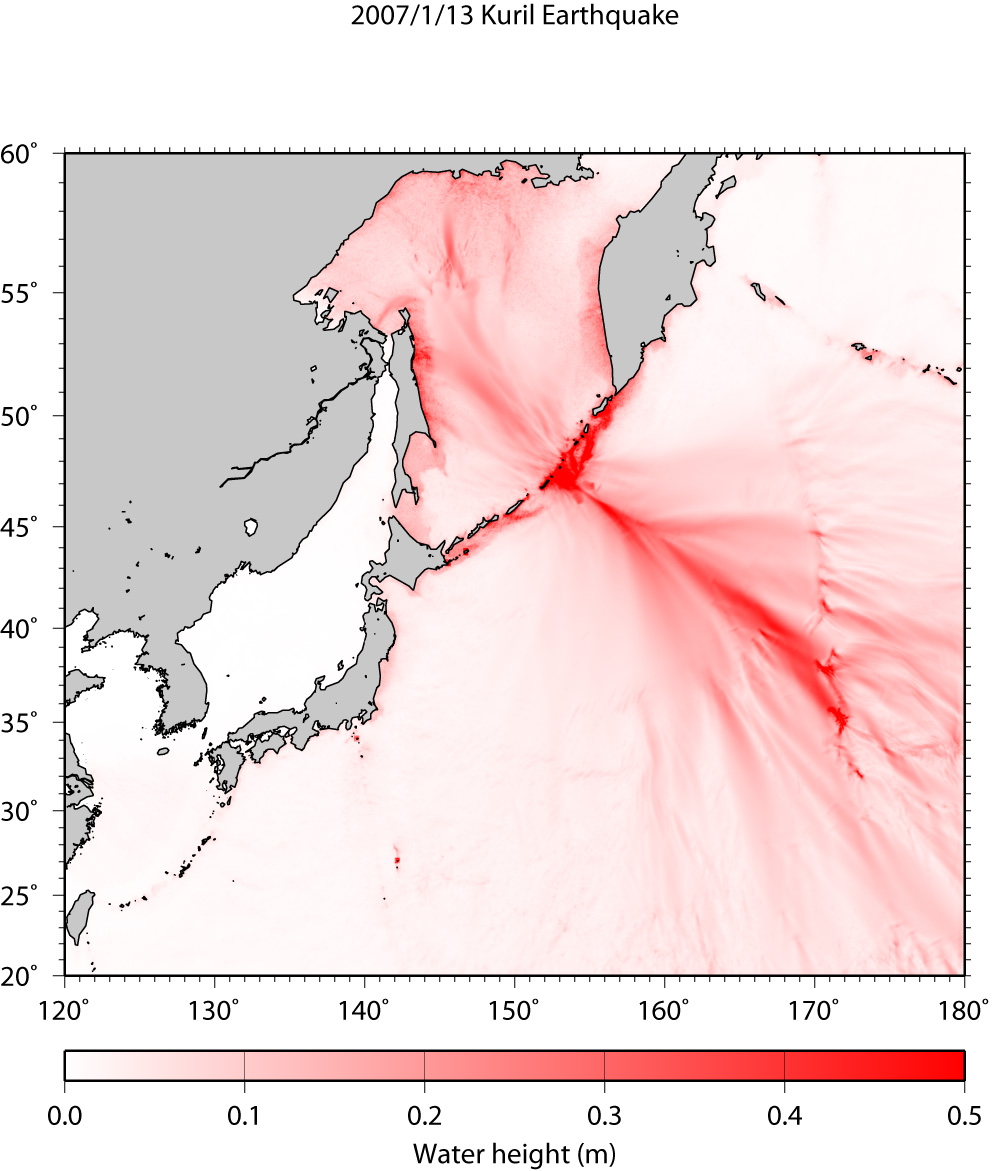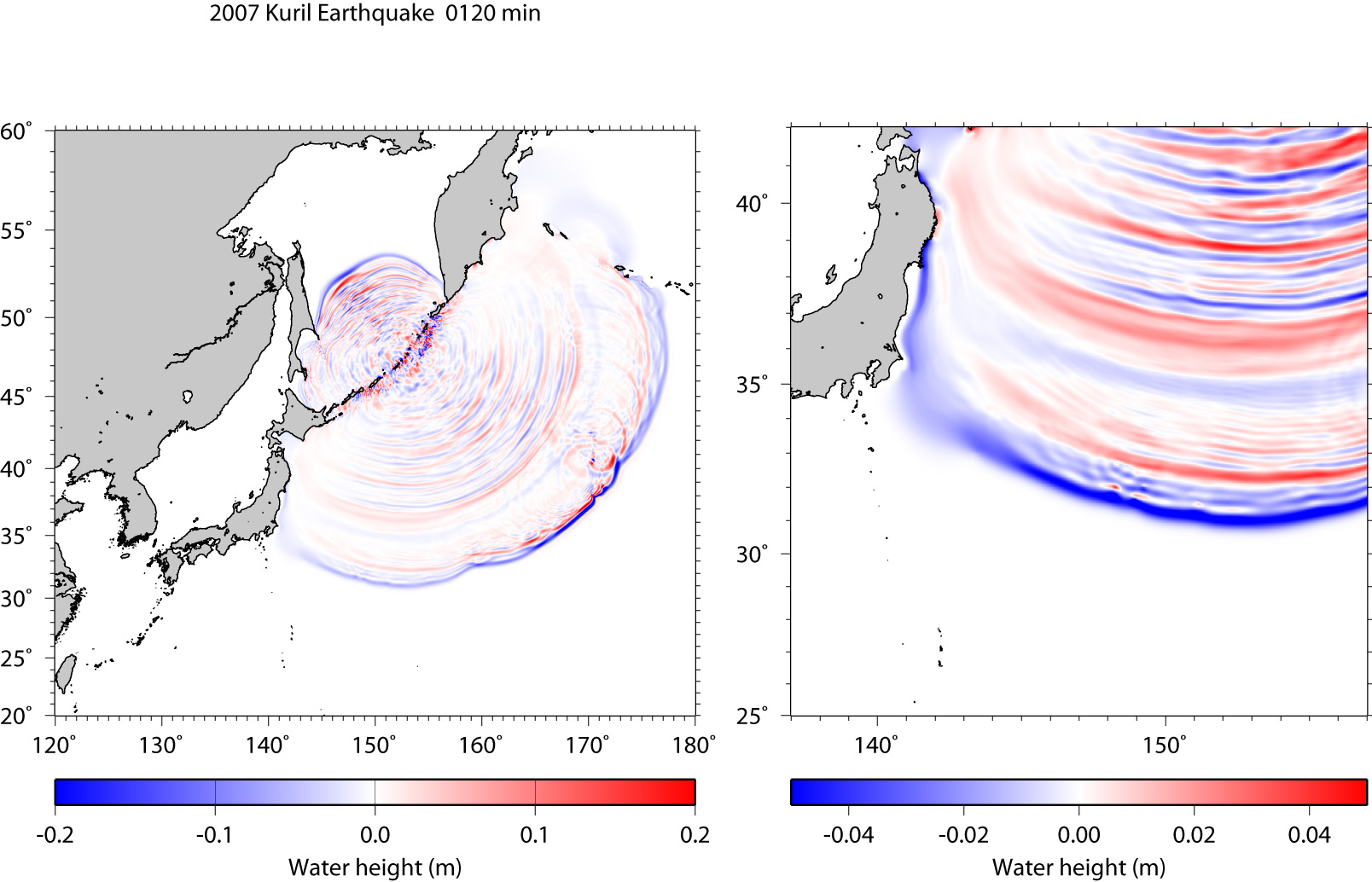| Kuril Tsunami on January 13, 2007 |
We have simulated the tsunami generated from the Kuril earthquake (46.288°N, 154.448°E, Mw=8.2 at 04:23:20 UTC according to USGS) on January 13, 2007. The assumed tsunami source is based on the source model by Y. Yagi, which is consistent with the aftershock area during one day after the mainshock (green circles in Fig. 1). The fault size is 160 km × 40 km. Top depth of the fault is 7 km. The focal mechanism is strike=215º, dip angle =45º and slip angle= -110º. Average slip on fault is 5 m. As the initial condition for tsunami, static deformation of the seafloor is calculated for a rectangular fault model [Okada, 1985] using the source model. The used bathymetry data is 2' grid interval resampled from General Bathymetric Chart of the Oceans (GEBCO) 1' grid data. To calculate tsunami propagation, the linear shallow-water, or long-wave, equations were numerically solved by finite-difference method [Satake, 1995]. The maximum heights of simulated tsunami indicate that the tsunami energy is concentrating to directions perpendicular to the strike of fault (Fig. 2). We can see that the initial tsunami motions along the Japanese coast begin with leading depression waves(Fig. 3).

Fig.1 Tsunami Source Model
The red contours indicate uplift, while the blue contours indicate subsidence with the contour interval of 0.1 m.
Red circles: aftershocks during one day after the event on 2006/11/15. Green circles: aftershocks during one day after the event on 2007/1/13.

Fig.2 Maximum Height of Computed Tsunami

Fig.3 Tsunami Propagation (Click to start GIF animation)
The red color means that the water surface is higher than normal sea level, while the blue means lower.
| by Yushiro Fujii (IISEE, BRI) and Kenji Satake (GSJ, AIST) |
|
|
| References |
|
Okada, Y. (1985), Surface Deformation Due to Shear and Tensile Faults in a Half-Space, Bull. Seismol. Soc. Am., 75, 1135-1154. Satake, K. (1995), Linear and Nonlinear Computations of the 1992 Nicaragua Earthquake Tsunami, Pure and Appl. Geophys., 144, 455-470. |
Last Updated on 2007/1/15